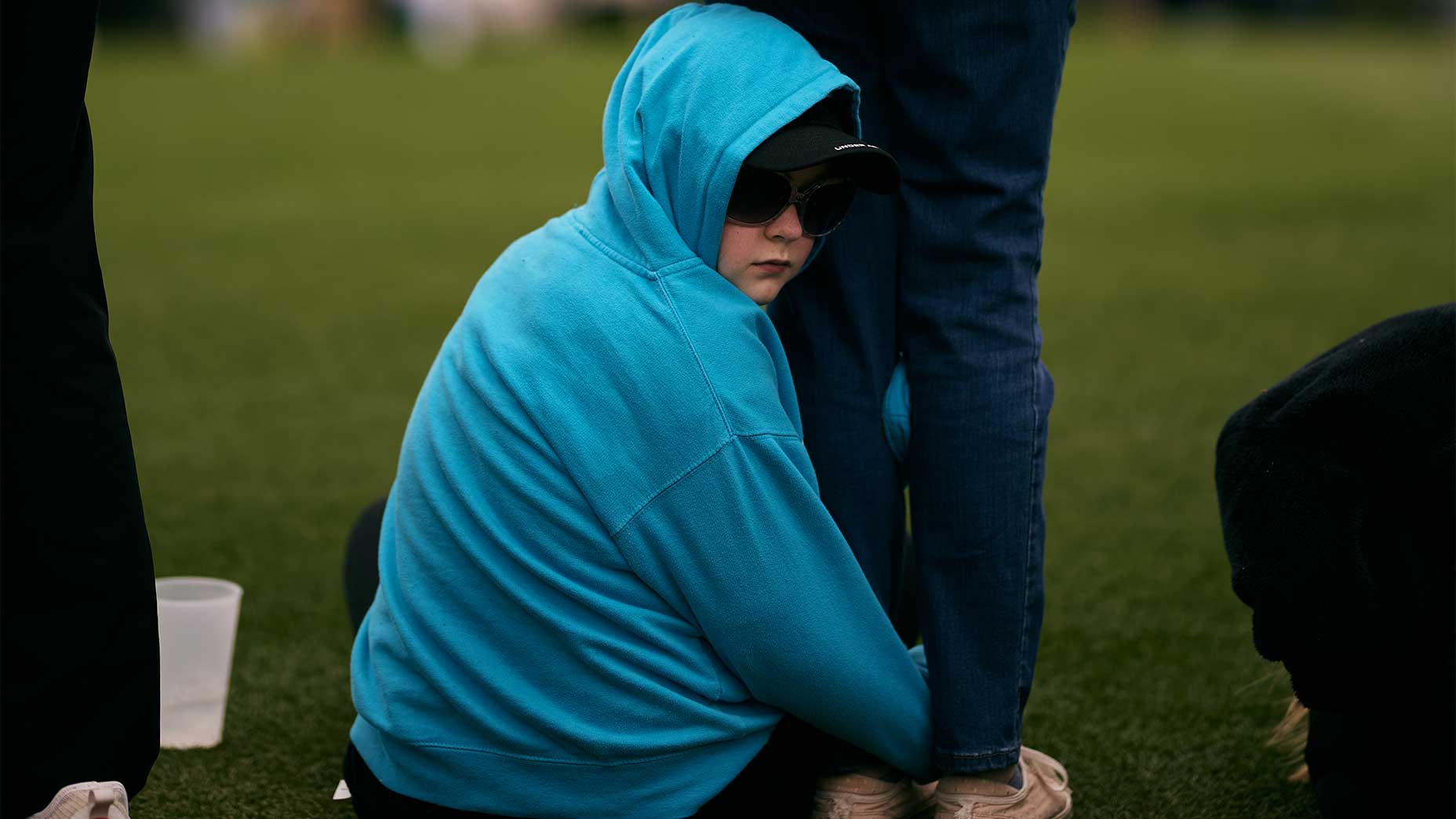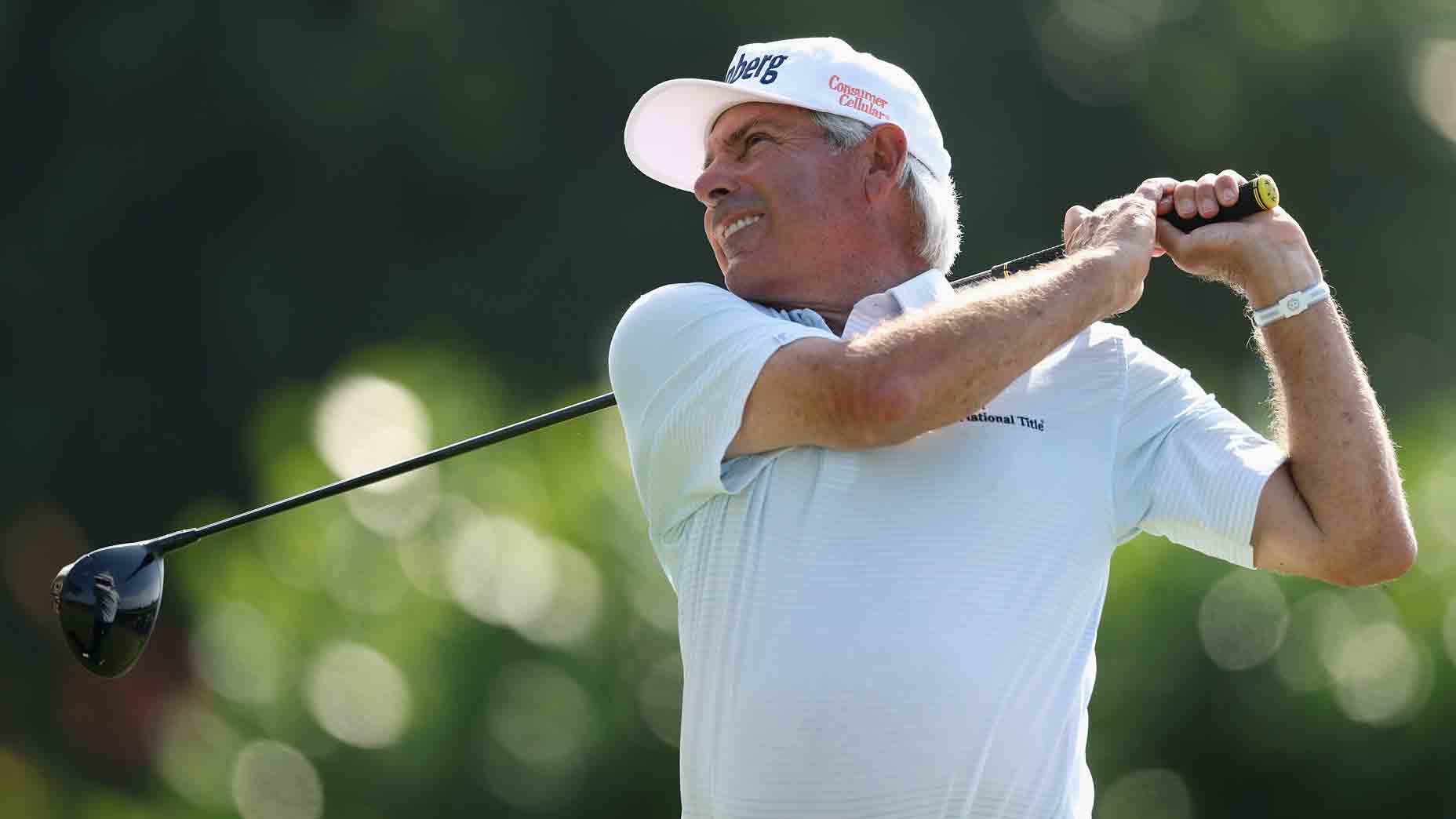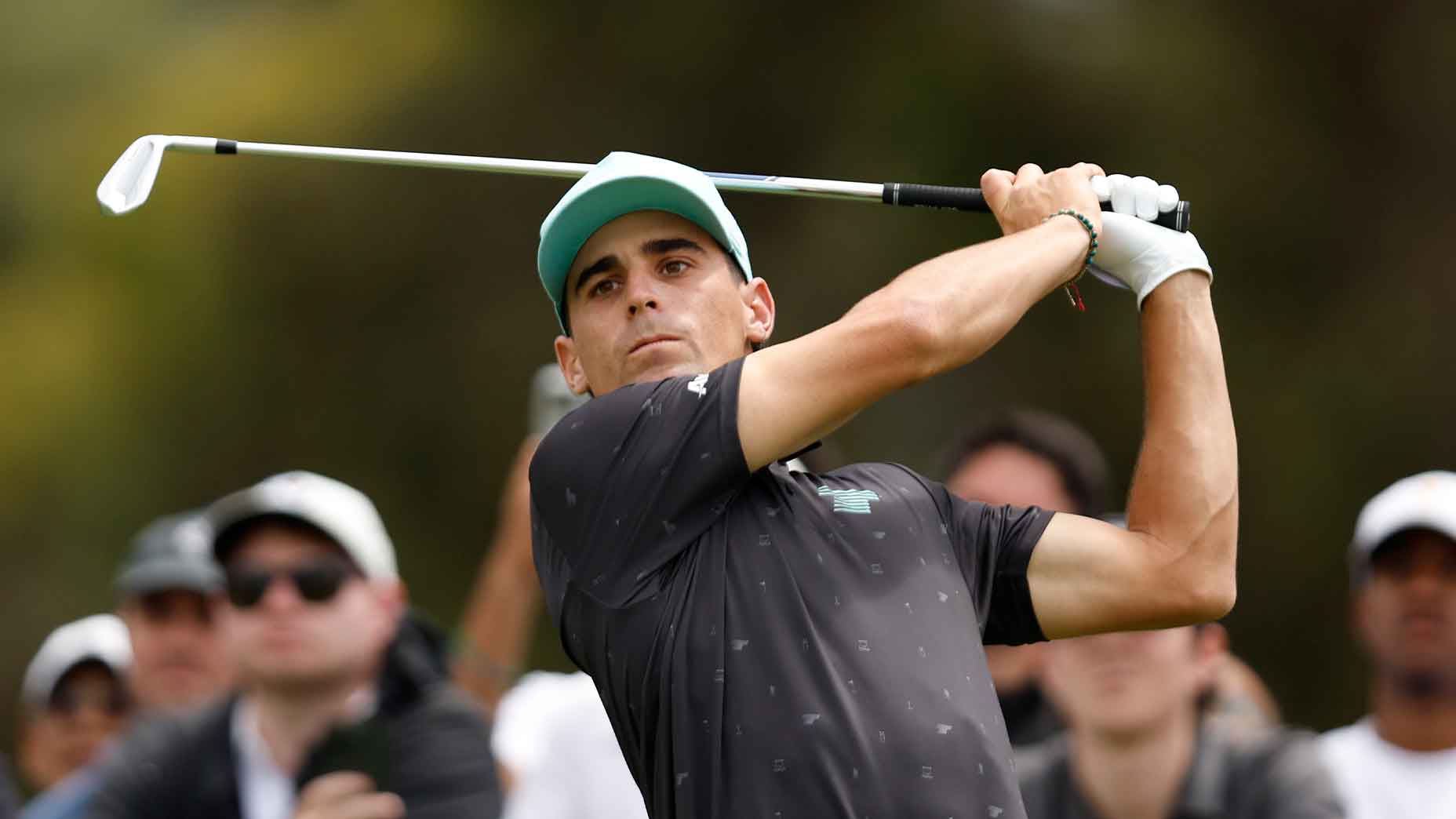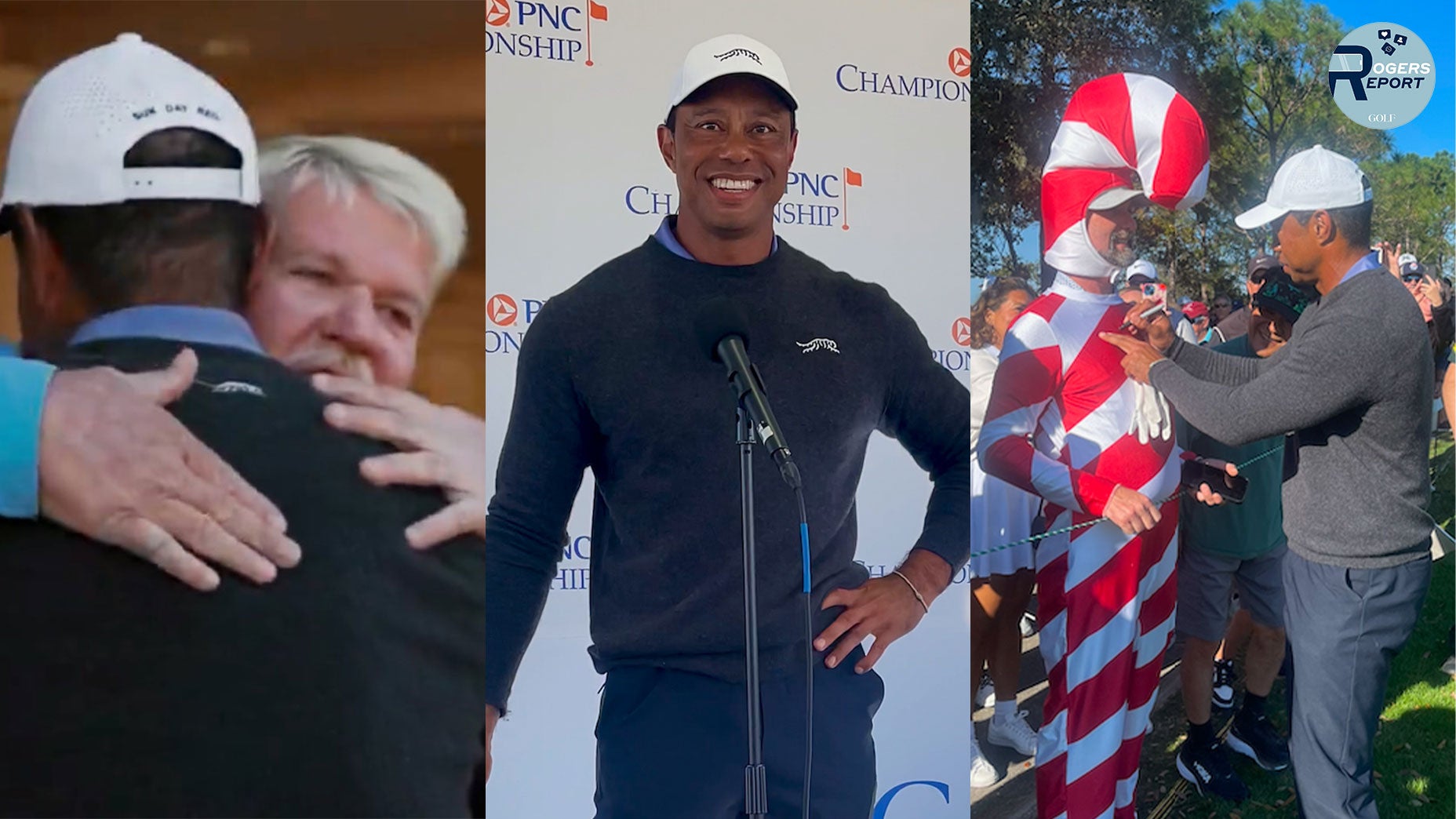On Saturday at Augusta National, a frigid, fall Masters broke out
- Share on Facebook
- Share on Twitter
- Share by Email

Saturday at the Masters did not call for short sleeves.
Stephen Denton
AUGUSTA, Ga. — As dusk came in, the young people picking up trash through the course were flipping over discarded cups and leaving little mounds of ice behind. That ice will melt, eventually and overnight, of course. But it will take a while. On this Saturday in April, autumn paid a visit to Augusta National.
The camera operators, some of them, were wearing fingerless gloves, and the back-of-the-house golf carts, taking the well-connected here and there, had their mobile, clear-plastic walls lining their carts. It felt like fall at the Masters.
In 2020, this tournament was played in mid-November, delayed by the pandemic. That will never happen again, we all said. Well, it happened for a day, in the third round of this 2022 Masters.
Scottie Scheffler, your 54-hole leader, went around the course in a T-shirt, a golf shirt, a zippered-sweater with a turned-up collar and a sleeveless vest. He stood for several long moments waiting to play his layup shot on 15, the three-shot par-5, with his arms crossed over his chest, the international symbol for I’m cold. He played the shot, as he played many of his 71 shots, with the vest off, then put it back on again to make the walk down the hill and toward the pond. Those were the cold spots, down in the hollows.
The warmest spots on the course were the player restrooms and the warmest spots in the clubhouse were in front of the gas fireplaces. The coldest spots on the course were the exposed 10th tee, high on a windswept hill, and the 12th tee, the lowest point on the property. As nightfall came, you may have expected to see a harvest moon, here on the Saturday eve of this 86th Masters.
“It’s a heavy wind,” Will Zalatoris said.
“It was cold starting out,” said Tiger Woods, who will perspire on the coldest of golf days.
“When it’s a cold wind it hits you more,” Danny Willett said.
“Obviously it was windy,” said Harold Varner III. “And it was cold.”
The pedals were falling off the azalea bushes, the white dogwoods and some of the pink ones, too. Fall had broken out, here at Augusta National.
Masters Sunday is about to be much more exciting than you thinkBy: Dylan Dethier
As the last twosome made it through the course’s four par-3 holes, crews stepped in to fill the divot holes with oval pieces of sod four inches thick. A layer of sand, a layer of dirt, a layer of sand, a layer of dirt, a layer of sand, grass icing on the top. The course workers, some of them, wore parkas and windbreakers and gloves and ski caps.
A young man working the hat concession at the main merchandise tent was asked what question he had received the most, on this Saturday when fall blew into town.
“Do you have hats for big heads?”
“What’s the most popular hat?”
“What are hats made of?”
He rattled them off with ease.
“What about, ‘Do you have ski caps?’” he was asked.
“That’d be fourth,” the young man said.
Some spectators wore their badges, hanging from lanyards and sheathed in plastic cases, on their backs, so the wind would not blow them in their noses and chins.
There was nobody hanging under the tree by the clubhouse, in mid-afternoon, and one hardy foursome eating on the outdoor verandah beside it. A cold wind was blowing across Augusta.
At the concession stands, the demand for beer and iced tea was low. The demand for hot coffee and hot tea was high. The 18 flags, each representing a competing nation above the giant scoreboard by the first fairway, were flapping wildly in the cold breeze.
The cold breeze, the cold breeze, the cold breeze.
Nobody was going for 15 in two.
Nobody could claim a hot putter.

Nobody could claim this was a magical spring Saturday on this magical links, because it was not. There were no (or few) notable eagle roars through the afternoon, no lines of ode-to-spring deadline poetry being delivered by Jim Nantz from his perch. Fall had made an uninvited visit to Augusta National. It didn’t even bother wearing a badge.
Fans stood with hands in pocket, shoulders raised, leaning forward. Others wore masks, not in the name of Covid prevention, necessarily, but in the interest of warmth. Some fans wore two hats, a baseball hat with a ski cap on top of it. Among the countries represented on these hats were Scotland, Nike and Augusta National. Yes, those are nations. Nike nation.
There were scarves made of cotton and silk and polyester.
There were empty folding chairs, their nylon backs filling with wind like mainsails on a sloop, tumbling over in the wind.
Long after the last players came through 1, there was a lone man in a green windbreaker testing the firmness of the first fairway with a contraption that looked like a bicycle-tire air pump. Long after the last players came through 10, there was a two-man team on the 10th green, each fella zipped to the chin, taking a series of photographs for a topographical map. Why? Who can say? It’s Augusta National. The day was dank, except for spells here and there. Still, there was a plan for the day and not much would get in its way. You know: it’s Augusta National.
Paulina Gretzky went to a courtesy-car Mercedes, key in hand. She entered from the passenger side. Her fiancé, Dustin Johnson, was in the caddie shack, grabbing a turkey sandwich. He emerged before long and went to the car and climbed behind the wheel. Was the car warm? The car was warm. Do we know that? We do not. But sometimes you can make a guess.
Scottie Scheffler finished his round, signed his card, did a series of interviews and went to the range. Yes, he went to the range. It was cold. That we’re certain of. It was a Saturday night in April that felt like a Saturday night in November. Fall had descended upon Augusta.
Michael Bamberger may be reached at Michael.Bamberger@golf.com.
Latest In News

Michael Bamberger
Golf.com Contributor
Michael Bamberger writes for GOLF Magazine and GOLF.com. Before that, he spent nearly 23 years as senior writer for Sports Illustrated. After college, he worked as a newspaper reporter, first for the (Martha’s) Vineyard Gazette, later for The Philadelphia Inquirer. He has written a variety of books about golf and other subjects, the most recent of which is The Second Life of Tiger Woods. His magazine work has been featured in multiple editions of The Best American Sports Writing. He holds a U.S. patent on The E-Club, a utility golf club. In 2016, he was given the Donald Ross Award by the American Society of Golf Course Architects, the organization’s highest honor.










